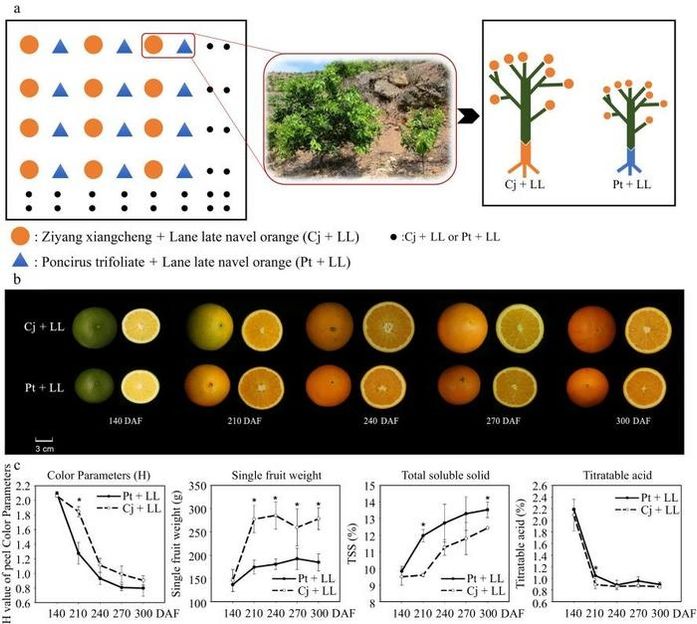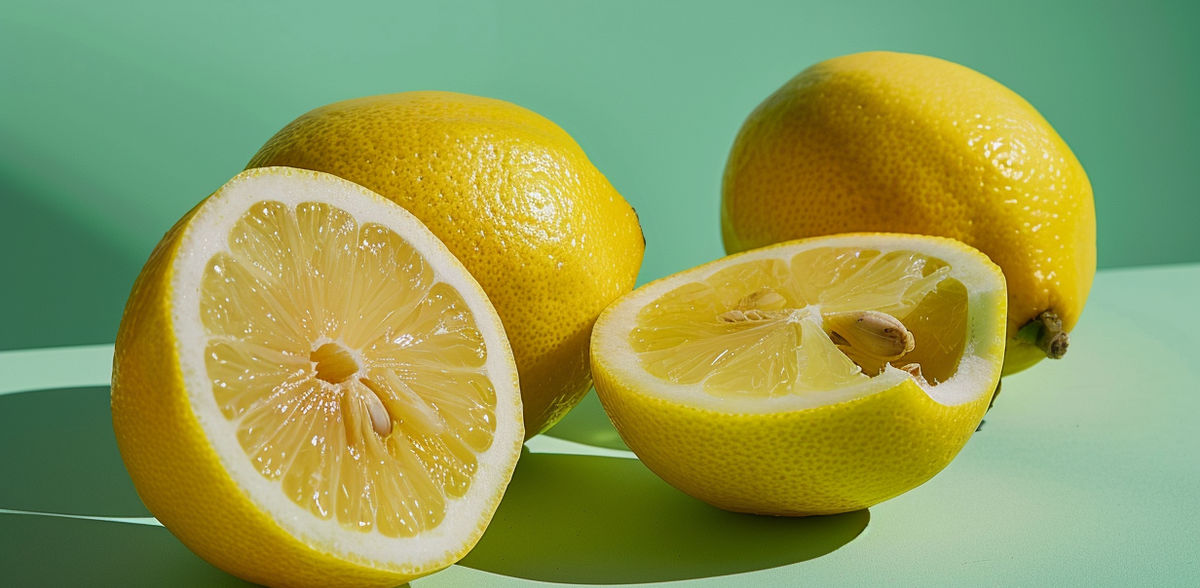Unlocking alkalinity stress tolerance in citrus
Insights from Ziyang xiangcheng rootstock
Alkalinity stress significantly hinders plant growth, particularly affecting citrus, a vital crop worldwide. Ziyang xiangcheng (Citrus junos Sieb. ex Tanaka) (Cj), an alkalinity-tolerant citrus rootstock, prompts interest in understanding its resilience mechanisms. Research reveals that lateral root (LR) formation and hormonal interactions, especially involving jasmonate (JA), are key to stress adaptation. However, the specific roles of JA in root development and stress response, along with the function of plasma membrane H+-ATPase in root adaptation to alkalinity, are less understood. Despite progress in identifying stress response pathways, a comprehensive understanding of how these mechanisms enable citrus rootstocks like Cj to withstand alkalinity stress, influencing grafting outcomes and scion characteristics, remains a significant research gap.

The planting mode and different performance of (a) trees and (b) fruits of Cj + LL and Pt + LL, and (c) the fruit quality data of peel color parameters, single fruit weight, total soluble solid and titratable acid of Cj + LL and Pt + LL at five different development stages.
Fruit Research
Fruit Research published online a paper entitled “Comprehensive analysis provides insights into Ziyang xiangcheng (Citrus junos Sieb.) tolerance of alkalinity stress” on 02 January 2024.
In this study, two citrus rootstocks, Ziyang xiangcheng (Citrus junos Sieb. ex Tanaka) (Cj) and Poncirus trifoliata (Poncirus trifoliata (L.) Raf.) (Pt), and one navel orange scion, 'Lane Late' navel orange (Citrus sinensis (L.) Osb.) (LL) were used. These grafted materials Cj + LL and Pt + LL (rootstock + scion) were alternately planted in an orchard with calcareous soil, characterized by high calcium level (7,075.27 mg/kg) and pH value (7.88) but lower mineral elements (Fe, Zn, Cu, Mg and Mn) compared to a control orchard. Observations revealed that Cj + LL exhibited superior growth, yield, and fruit quality than Pt + LL, demonstrating significantly larger tree height, canopy volume, fruit size and heavier single fruit weight. Additionally, the study delved into the mineral element content in different tissues and found that Cj + LL generally had higher levels of mineral elements and microelements, particularly Cu and Fe, in contrast to Pt + LL.
To understand the molecular regulatory mechanism behind these phenotypic differences, RNA-seq was utilized to generate transcriptome profiles for the root, stem, and leaf tissues of Cj + LL and Pt + LL. 3,431 differentially expressed genes (DEGs) were identified between Cj + LL_root and Pt + LL_root, indicating a major differential resource between Cj + LL and Pt + LL. Enrichment analyses identified key biological processes and pathways, including flavonoid biosynthesis, plant hormone signal transduction, and glutathione metabolism, underscoring the complex interplay of genes involved in stress response, nutrient uptake, and development. Many DEGs related to lignin biosynthesis were also identified, several key genes for lignin biosynthesis were all downregulated in Cj + LL_root, and the content of lignin in Cj + LL was significantly lower than that in Pt + LL in both the root and leaf tissues. Therefore, lignin biosynthesis may play an important role in the response to alkalinity stress.
Particularly, the study highlighted the crucial role of jasmonate (JA) in alkalinity stress tolerance, with key genes in the JA signal transduction pathways upregulated in Cj + LL. The JA content was notably higher in Cj + LL, correlating with increased tolerance to alkalinity stress, as evidenced by exogenous JA treatment experiments that enhanced the stress resilience of Cj seedlings. Additionally, the analysis of plant hormones revealed differences in ABA and IAA contents between the rootstocks, further implicating plant hormone dynamics in the observed stress responses.
The study concludes that JA, along with its associated metabolic and signal transduction pathways, plays a pivotal role in mediating tolerance to alkalinity stress in citrus, influencing lateral root formation, lignin biosynthesis, and reactive oxygen species scavenging. These findings underscore the importance of understanding the genetic and molecular mechanisms underlying rootstock tolerance to environmental stresses, offering potential strategies for improving citrus cultivation in challenging soil conditions.





























































